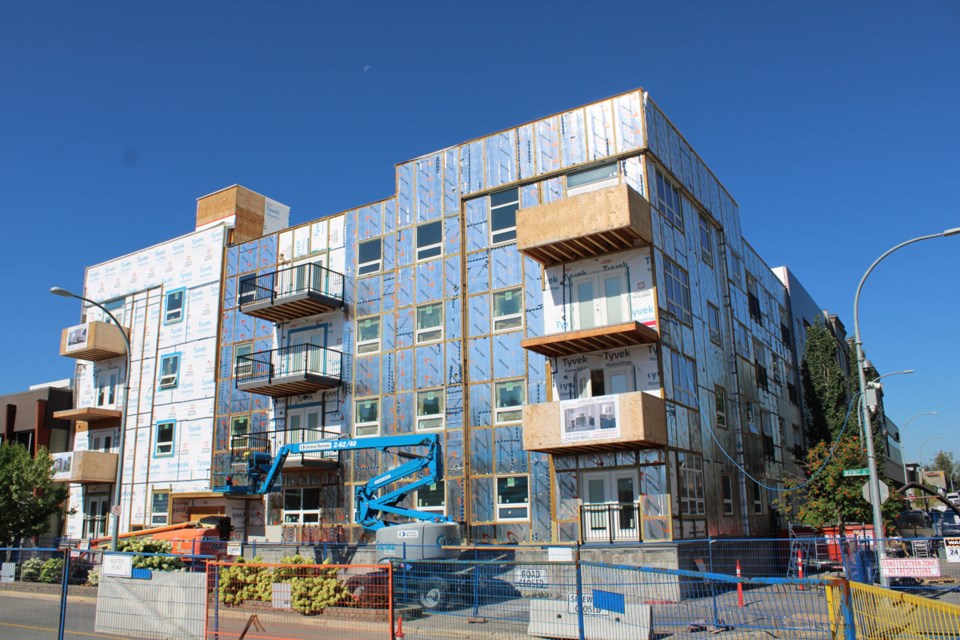The announcement this week of soon-to-be provincial powers that boost housing development in B.C. are a positive sign, but regional nuances need to be baked into any policy and legislative changes or rural areas will struggle to meet targets.
Northern B.C. has long suffered from a housing supply shortage, but it would be a mistake to think the cause of that problem, and the solutions to it, are the same as the Lower Mainland’s.
First, housing supply in Northern B.C. has two specific thematic challenges: the age of the stock and its adequacy.
Most of the region’s housing is old, single-detached bungalows, and there is a dearth of multi-family housing, particularly rental and seniors’ supply.
Thanks to a 2017 study completed by UNBC’s Community Development Institute, there is a readily available source of regional housing data the province, local governments and other organizations can draw on to support policy and program development.
The other bit of good news is that, thanks to recent provincial leadership and funding via UBCM and NDIT, most local governments in the region have completed housing needs assessments, which are critically important to understanding the nature and magnitude of localized housing gaps.
While I would agree local governments should always focus on improving approval timelines that drive investment – it’s just good economic development – I would caution against lowering a hammer on small towns that are chronically understaffed.
Let’s be frank. It’s been a rough few years for many small communities in Northern B.C., thanks to floods, wildfires, a pandemic and industry consolidation.
I’ve never seen a higher turnover rate for chief administrative officers and senior administration in local government, and this fall’s election results would suggest more to come.
We should remember that aside from zoning and permitting, housing has not traditionally been a core function of local government in British Columbia.
Outside of a well-staffed planning department, of which there are only a few in Northern B.C., if any, you won’t find many administrators who have a background in housing or real estate development.
So, in addition to a lack of housing, we also have a significant capacity challenge.
A solution would be to resurrect the Northwest Readiness land-use planning program and fund additional planning positions in local governments across the north.
Encouraging collaboration between the province, local governments, UNBC’s school of planning and the Planning Institute of B.C. to launch an apprenticeship program that counts toward professional accreditation and boosts capacity and youth education in the north could be a novel and ongoing solution to this challenge.
Shared services agreements between local governments should also be considered, allowing more than one local government to benefit from a neighbour government’s planning capacity or building inspectors.
The next challenge would be development costs – a local government could do everything in its power to support development, but we still need more developers, and those developers need materials and labour.
It’s not cheap to build in the north and we typically only have a five-month window each year to build in.
We could increase the supply of developers through an incentive and liaison program, which on one hand would see financial incentives provided to encourage more developers to build up north (similar to NDIT’s Northern Housing Incentive Program or municipal tax abatements), while on the other the province could facilitate connections between out-of-region developers and economic development departments in the north.
Some thought should be put into ensuring that materials such as lumber milled in the north is sold directly to developers building in the north instead of being trained south, only to be shipped back up north and sold at a premium through our local Home Depot or building supply store, which is often the case.
At the same time, a boost to dual-credit trades training and apprenticeship programs through the north’s high schools and colleges, if supported, could begin to address labour shortages.
The BC Energy Step Code and its associated timelines should also be revisited to ensure performance targets for new construction aren’t unnecessarily driving up development costs that would be passed onto the consumer in an inflationary environment or, worse, slow down development of needed housing.
The good news is there’s renewed leadership and focus on the housing front, which is sorely needed.
My hope is that the politics of the challenge can be set aside to focus on practical, substantive actions that respect regional nuances.
Let clearer heads prevail and let’s get to work.
Joel McKay is the CEO of the Northern Development Initiative Trust, an independent regional economic development organization that serves Northern B.C.




